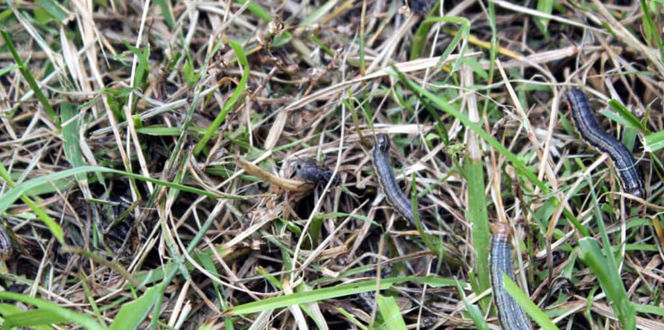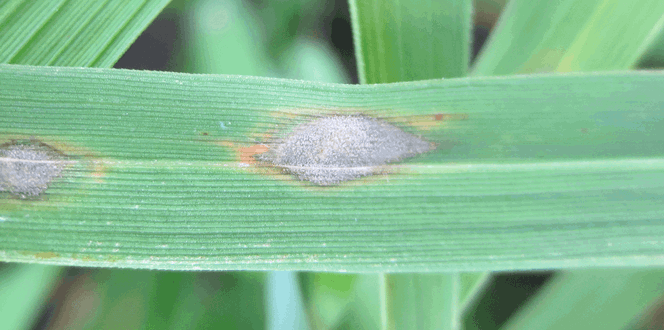Red Thread & Pink Patch Description:
Red thread and pink patch are closely related fungal pathogens that infect turf, appearing with a reddish-brown covering and wilted patches.
Hosts:
Both red thread and pink patch disease can cause damage to almost all cool-season turfgrasses, meaning grasses that grow in areas with cold winters and hot summers. Creeping red fescue and ryegrasses are especially vulnerable.
Signs & Symptoms:
These diseases favor lawns with moist soil, excessive layers of dead grass called thatch, or lack of nitrogen–one of the main ingredients in lawn fertilizer. When an infection occurs, the turf will turn a reddish-brown color. Patches of infected leaves appear water-soaked, then turn brown and die. Pink threads emerge on red thread-infected grass leaves and pink patch infected leaves develop jelly-like pink blobs.
Disease Management:
Proper fertilization and the use of fungicides can help slow down the red thread and pink patches. Fertilizers that contain nitrogen may both promote lawn growth and help protect against injury from disease. Lawns could also benefit from improved air circulation and soil drainage. Excessively moist grass creates an ideal environment for diseases like red thread and pink patches to develop. One way to help avoid damp turf is by watering grass early in the day to allow it to dry before evening. A fungicide treatment could add an extra layer of protection but may be affected by what stage the disease is in. Talk to a local landscape professional about a fungicide treatment regimen that will work best for your lawn.
*Photo credit - Dr. Peter H. Dernoeden, University of Maryland (first photo)
*Photo credit - Bruce Watt, University of Maine, Bugwood.org (second photo)





